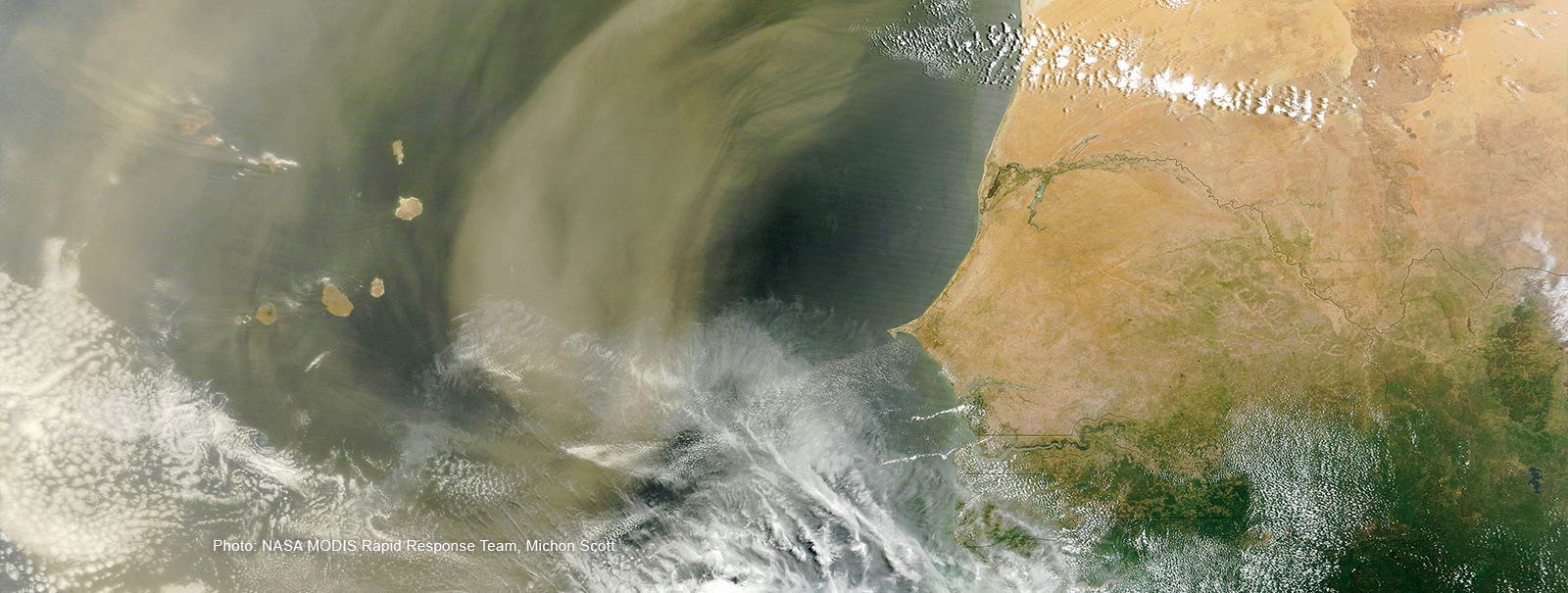Scientific Setting
Our current understanding of the complex interactions of atmosphere, hydrosphere and biosphere is rather limited, particularly with respect to the consequence and feedback potential to global climate change. This is even more the case for the tropics, key regions of the global climate system, in which ocean and atmosphere are coupled in multiple and most dynamic ways.
The high scientific relevance of the tropics in marine and atmospheric sciences is contrasted, however, with a striking lack of scientific infrastructure and long-term observations. Hence, GEOMAR Helmholtz Centre for Ocean Research Kiel has been conducting research around the Cape Verde Islands in the tropical northeast Atlantic for many years.
The tropics are a gigantic weather engine that features phenomena such as energetic thunderstorms, hurricanes, heavy monsoon rain and prominent climate oscillations such as El Niño. In all these, the ocean plays a central role.
Emissions of halogenated trace gases from the tropical Atlantic due to the high tropospheric convection in this region can reach all the way into the stratosphere where they are involved in natural ozone destruction. In the other direction, the atmosphere has a strong influence on the biogeochemistry and biological productivity of the tropical Atlantic by depositing massive amounts of Saharan dust onto the sea. But also within the ocean major processes are at work. The coastal upwelling system of West Africa, for example, feeds a large marine ecosystem that is among the most productive, diverse, and economically important ones worldwide. Seamounts around Cape Verde are hotspots of marine biodiversity. At the same time a harmful oxygen minimum zone exists in the ocean’s interior, which in the Atlantic is not yet as pronounced as its counterparts in the Pacific and Indic but in recent decades has shown trends of expansion as dedicated oceanographic studies from Kiel report. Finally, the region is also of high interest from a geoscientific perspective due to its location on a so-called “mantle plume” which gives rise to a volcanic hotspot. Thus, the region bursts with topical scientific questions of high relevance.

